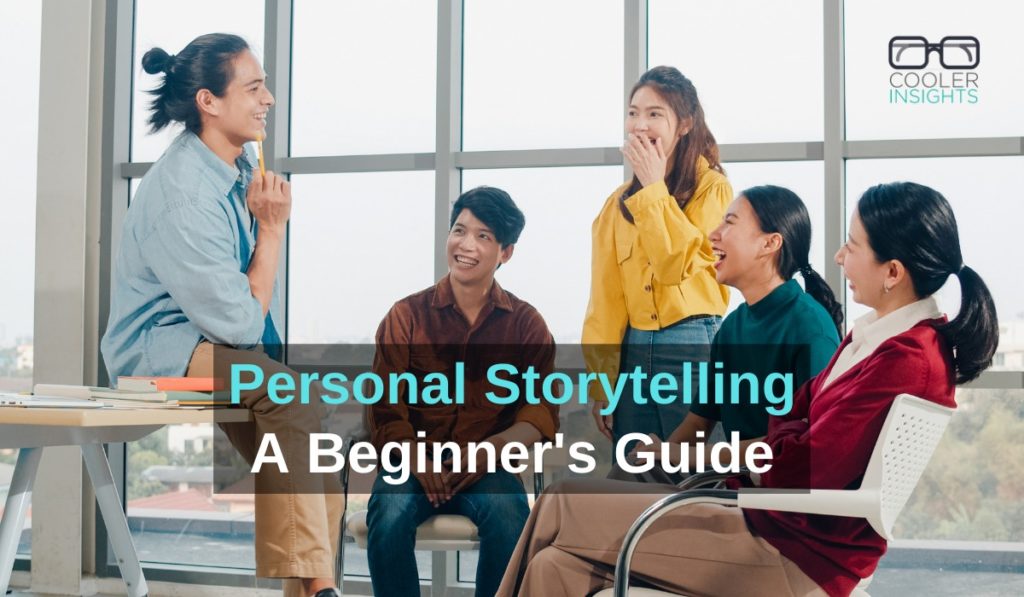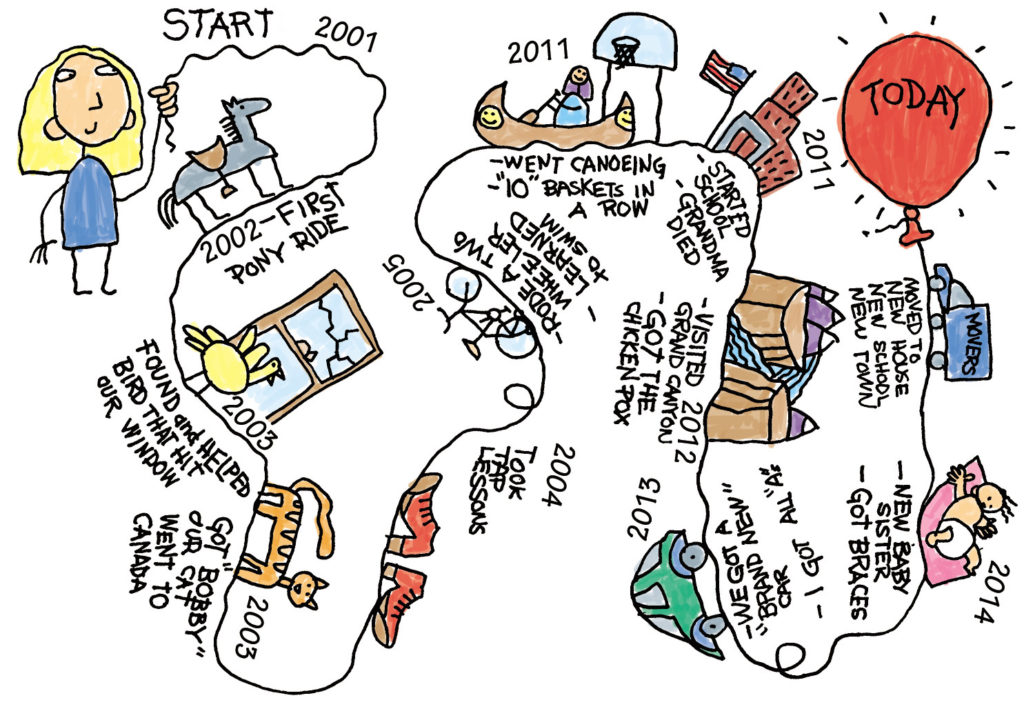
Office photo created by tirachardz – www.freepik.com
Do you know that personal stories can change the world? More importantly, would you like to make an impact through personal storytelling?
All of us have stories. These personal narratives include episodes of our life, our education, our work, our relationships, as well as our interactions with the world around us.
Sadly, many of us are too afraid to tell our stories. We fear that we will be judged or ridiculed if we are unable to tell our stories well.
Hopefully, that will all change, thanks to the book How Your Story Sets You Free by Heather Box and Julian Mocine-McQueen.
In this article, I will share some of the lessons you can learn from the book, as well as best practices you can adopt to strengthen your personal storytelling abilities.
Why Personal Stories Matter
Storytelling is one of the most powerful content strategies you can deploy to influence and persuade others.
As humans, we’re hardwired to love stories as they help us to understand our world.
Personal storytelling helps us to communicate our unique experiences, capture important lessons, and convey any wisdom gleaned.
Stories also help to make information stick. Parts of our brain light up as if the events were happening in real life — this is the process called neural coupling.
Personal stories also stick not just for the hearer but the storyteller. When we tell (or listen to) a memorable story, our retention of information may increase by as much as seven times!
Personal storytelling can also help us to connect with, inspire and influence others. By sharing our personal narratives with others, we help to lower their guard and reach out to them in empathy.
Parts of a Good Personal Story

Most good stories follow a basic formula that you can apply:
- Setting/ Context: Where does your story occur? Describe it with as much detail as possible—time, place, setting, colour, sound, smell, texture, taste, etc.
- Characters: For personal stories, you’ll naturally be a main character in your story. However, you should also include the details of other characters—how they look, their voice, their movements, etc
- Action and Conflict: Good stories usually have some conflict or challenge. This struggle can be in a single event or multiple events.
- Change and Turning Points: Memorable stories normally have an element of transformation—a turning point where the action changes. These can be large or small.
- Vulnerability and Emotional Resonance: Powerful stories not only transports you to a specific time and place—they also make you feel something. Being vulnerable and honest can make a world of difference (read Brene Brown’s take on being vulnerable here.)
- Your Message: This is the moral of the story, ie the key takeaway for your audience. What could someone learn from your life experience? Is your message about picking yourself up after falling? Being honest even when the truth hurts? Giving yourself a break every now and then?
- Values: Your personal values are important as they can help your audience to understand what’s important to you. They are your guiding principles.
(Learn more about storytelling formulas in this article here.)
“Talking about your work is one thing, but telling the story of WHY you do the work opens up to such a deeper level of connection and understanding.”—John Kaganga
How to Find Your Story
To find your story, the authors suggest that you should create a life map which details the key milestones in your life.
You can do this with a large piece of paper, coloured pencils, markers and crayons. Or just use a blank canvas online.
Here are some things to include in your life map:
- Turning points in your life
- Influential people and their impact on you
- Moments of challenge
- Moments of celebration
- Milestone moments (eg graduation, first job, marriage, birth of a child, death)
- Big choices you made
- Big choices were made for you
Here’s an example of how such a life map could look like. (Naturally, it should be a lot more nuanced and detailed.)

Courtesy of Thoughtful Learning
The other thing you should consider uncover the values you have in your life, as represented by your life map. Are there any turning points that you can use to spin into a personal narrative that can connect with your audience?
Use the following prompts to articulate your values:
- My value is: __________
- What I mean by that is: ___________
- This value is reflected in my work, my friendships, and my family in these ways: _____________
- One story or memory of how that value was shaped is: _______________
Identifying Your Storytelling Audience

Is there somebody whom your personal story can impact? Use this part of your storytelling process to narrow down on your target audience.
Many of us have experienced heartbreaks, faced setbacks in our career, encountered health scares, or healed ourselves from a broken relationship. The goal is to identify that single, specific person who can benefit from your message and your story.
Here’s how you can do so:
- Describe the one specific person who really needs to hear your story: Eg. A 40-something man in a midlife career crisis
- Write down the message you want to say to that person: Talk about what you went through, and how going back to your life’s passion helps
- Reflect on and write down what your audience member believes about your message before hearing your story: He may imagine that he is stuck in a career rut. He may also think that others will judge him if he decides to leave his stable job.
- How do you intend to shift his perspective after he hears your story?: My intention is that he realises that there are many routes to a second career, and he doesn’t have to feel stuck. However, he must be prepared to start from the beginning yet again.
- What parts of your story does he need to hear to trust you as a messenger on this topic?: Pull out the specific thread in your life story that connects with him.
Remember that your key goal is to evoke a personal connection with your audience.
How to Craft Your Personal Narrative

OK, now that you’ve got the ingredients laid out, you now need to look at how you should craft your tale.
Consider using the Public Narrative technique developed by Marshall Ganz.
Quoting from the book…
The Public Narrative is about sharing your personal story, illuminating values shared by your audience, and inspiring them to find the courage to choose action.
It comes in three parts:
#1 Story of Self
This is where you sieve out narratives from your life that demonstrated your values and leadership. They may include…
- Choices you made in your journey
- Stories of hurt
- Stories of hope
- Moments that taught you the world needs to be fixed
- Moments when you learned that you can make a difference
#2 Story of Us
Here, you focus on a specific narrative that taps on the collective experience of your audience.
Your goal is to expound on the shared values with whomever you are speaking to. By doing so, you ensure that everyone you’re speaking to feels connected—that they’re part of the same community of “we.”
A good way to do is to focus on a common experience or event that your audience can resonate with.
#3 Story of Now
This is that part of your personal story where you inspire and call your audience to action.
You do so by communicating the urgent need for action. Use images of human realities rather than facts and figures. Tap into your listeners hope, aspiration, and possibilities of what could happen if they act, as well as the consequences of inaction.
In short, this is the call to action part of your personal storytelling.
What To Do Before and After Storytelling

How do you prepare yourself for your maiden personal storytelling effort?
Here are some steps suggested before you tell your story:
- Know Your Why: Write down why you’re sharing your story, why it’s meaningful and important to you.
- Find a Story Buddy: Share your story with a person whom you can trust, before and after the effort. This should be somebody who is willing to tell you where you’re good at—and which areas you should improve on. (Read about deliberate practice here.)
- Know Your Content: This is almost a given, but you need to practice, practice, practice! Preparation shows that you respect your audience.
- Develop a Practice to Get Grounded: Adopt a ritual—go for a walk, take a few deep breaths, speak to others, have a coffee, or anything else to prep yourself for the effort.
After you have told your tale, consider these after-story steps:
- Take Care of Yourself: Take some time to unwind and chill after the session.
- Keep Your Buddy in the Loop: Update your story buddy on what you’ve done, and send them a text, or call them.
- Prepare to Receive Feedback: These can be a wide barrage of emotions, both positive and negative. Know that you don’t have to take them all.
- Resist the Urge to Criticize Your Story: Don’t be self-judgmental. While we’re happy to bask in the glory of compliments, getting a couple of brickbats isn’t the end of the world.
- Focus on Positive Things: Reflect and look at where you’ve done well, rather than ponder over your mistakes.
Personal Storytelling Places and Platforms
Now that you’ve gone through the what’s, why’s, and how’s, your next step is identify where you can tell your story.
In the book, there are several places and occasions for you to tell your personal story.
#1 Intimate Group Storytelling
For small groups (one-to-one or one-to-few), consider meeting up with people for a coffee, tea or a meal.
You can also organise a walk or hike with the other individual. Chat and message them. Or do a video chat (Zoom call, WhatsApp or Skype).
For more sensitive stories, consider writing them a letter or email.
#2 Online Storytelling
There are many opportunities to share your personal stories on social media channels like Facebook, Instagram, LinkedIn, Twitter, YouTube or TikTok.
For each of these channels, consider what the best format will be. Videos tend to work well, but they depend on how comfortable you are speaking to a camera.
You may also use channels like emails to convey your story to a limited group of people.
#3 Written Stories
From blog articles to newspaper columns (eg Op-Eds), written stories have many platforms to appear on.
You may also wish to craft a memoir—this is a longer form story that may take the form of a book.
#4 Storytelling from the Stage
For the Moth and TEDx wannabes, consider speaking to an audience in front of a stage. This does require courage and an event venue that will host your personal storytelling endeavours.
Do also consider working with community networking groups.
#5 Bigger Productions—Plays, Novellas, TV Shows, Movies
If you’re on a roll, consider spinning your personal story into a play, a short story, or even a TV show or movie!
#6 Storytelling from the Office
Finally, but no less importantly, consider how you can share your personal stories at work.
The office can be one of the best places for you to share your personal narrative, and you can use the Public Narrative frameworks to guide you.
Conclusion
Crafting and sharing your personal story can be a powerful way for you to impact lives, influence others, and transform your world.
By doing so, you’ll gift the world the chance to hear your truth—and perhaps that truth, that story can set us all free.
“Storytelling offers us the gift of being seen.”—Fenton Lutunatabua

wonderful blog amazing explained very well